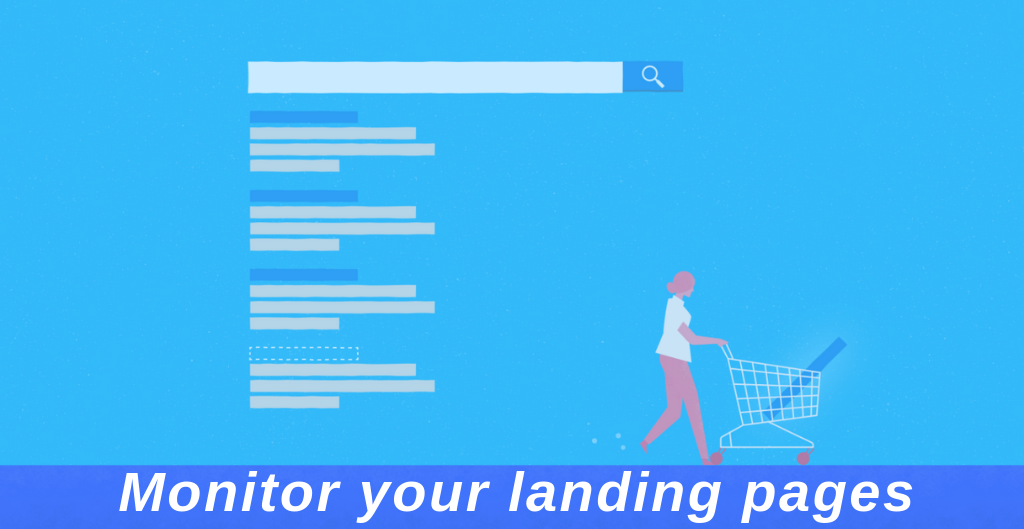As a general rule, SEA is used as soon as the website is launched, when SEO efforts are not yet paying off. In fact, SEA or SEM, Search Engine Advertising/Marketing is defined as paid referencing and SEO, Search Engine Optimization as natural referencing.

With SEA, all you have to do is pay search engines to display your site at the top of their search results (SERP). This is a way of attracting targeted traffic as soon as the website is online, so without having to wait for SEO to take effect.
What is SEA?
SEA is often the solution proposed to companies in a hurry. With SEA, you don’t have to wait for your keywords to naturally rise to the top of the search results. You buy a place directly at the top in search engines like Bing, Yahoo and, the giant, Google. By paying, you are given a prime spot in front of the target audience, people actively looking for your products or services.
All you have to do is create an ad based on your main keyword and you’re done. You also have the possibility of buying several advertising spaces with different keywords in order to maximize your return on investment (ROI).
What does SEA look like?
The look of SEA differs depending on the search engine you’ve chosen. If you’ve opted for Google, for example, the ad is only displayed under the search bar at the beginning and end of the list of search results. On Yahoo and Bing, however, the ads frame their results. There are some above, below, but also on the side.

Each of these search engines requires your ad to contain:
- A title: As the most visible part of the ad, it should include keywords and words that attract the target prospect’s attention.
- A URL: The destination link of your ad, leading to your product, service, contact form or other.
- A description: An additional persuasive element that helps the user to click on your ad.
- Extensions: They only exist on Yahoo and allow you to buy additional advertising space to show more of your website pages.
How does SEA work?
SEA has a fairly complex operating procedure, but it is easy to understand once you get into it. It works according to an auction system. Advertisers offer a price for the keywords they think are relevant to the subject of their ad. However, you won’t necessarily be charged for the amount of your bid. Indeed, it’s not because you’ve placed a €50 bid on a key term that the search engine will bill you for it for each click it generates. In fact, be aware that search engines will charge you per click according to their CPC system or Cost Per Click.
It is possible to optimise your costs in terms of SEA. All you need to do is perform a good keyword search. You are bound to come across terms with a high search rate, but that are not well targeted by your competitors. Doing that will get you a place at the top of the ads while paying less.
The advantages of SEA
- SEA generates an immediate result based on the budget allocated. All you have to do is pay to be visible on the keyword of your choice.
- There is no waiting time as with SEO.
- The conversion rate can be high if you’ve devised a great ad and made it as catchy as possible.
- It is always possible to adjust each ad to improve conversion rates.
- The ROI is palpable and not abstract as with SEO.
- You benefit from increased visibility if you opt for Google AdWords because it publishes each ad on all sites monetized by AdSense.
The disadvantages of SEA
- It is impossible to keep up the visibility of the ad as soon as it is no longer funded. In fact, it only works when the budget is there. If it runs out due to lack of funding or positive ROI, your site immediately stops receiving traffic, especially if you were solely dependent on SEA.
- This method of referencing requires a permanent financial investment, because it depends essentially on the advertising department.
- Despite its direct advantage over SEO in terms of time, SEA is an even more competitive environment. The positions to be filled by advertisements are not always available in the most popular niches.
- No one guarantees a positive ROI in paid referencing. That’s why it’s best to delve deeper into the subject and bring in a professional advertiser or someone who is AdWords certified for online advertising campaigns.
The differences between SEA and SEO
Natural SEO is very different from paid referencing or SEA. While the latter generally requires a hefty budget, this is not the case for the former. It is normally free of charge, although many spend money to speed it up a little.
SEO requires a fairly long waiting time also before it takes effect, while SEA is immediate. Generally speaking, with SEO you’ll have to be patient before you see its first results, at least a few months. Moreover, even so, there is still the risk of not dominating search engine results with your keywords.
At the same time, it is difficult to measure ROI with SEO, unlike SEA.
Why does web monitoring go hand in hand with SEA?

Real-time web monitoring goes hand in hand with SEA. In fact, you will receive an alert each time there is a display or unavailability problem on your site thanks to this monitoring. And this means you don’t run the risk of losing money for nothing if someone clicks on your ad when the site is inaccessible. This is not likely to happen, as you will have responded in time to get your site up and running again. Clicking on an ad costs you money; but if the destination URL doesn’t respond, you lose money. Hence the importance of monitoring your landing page or destination URLs.
